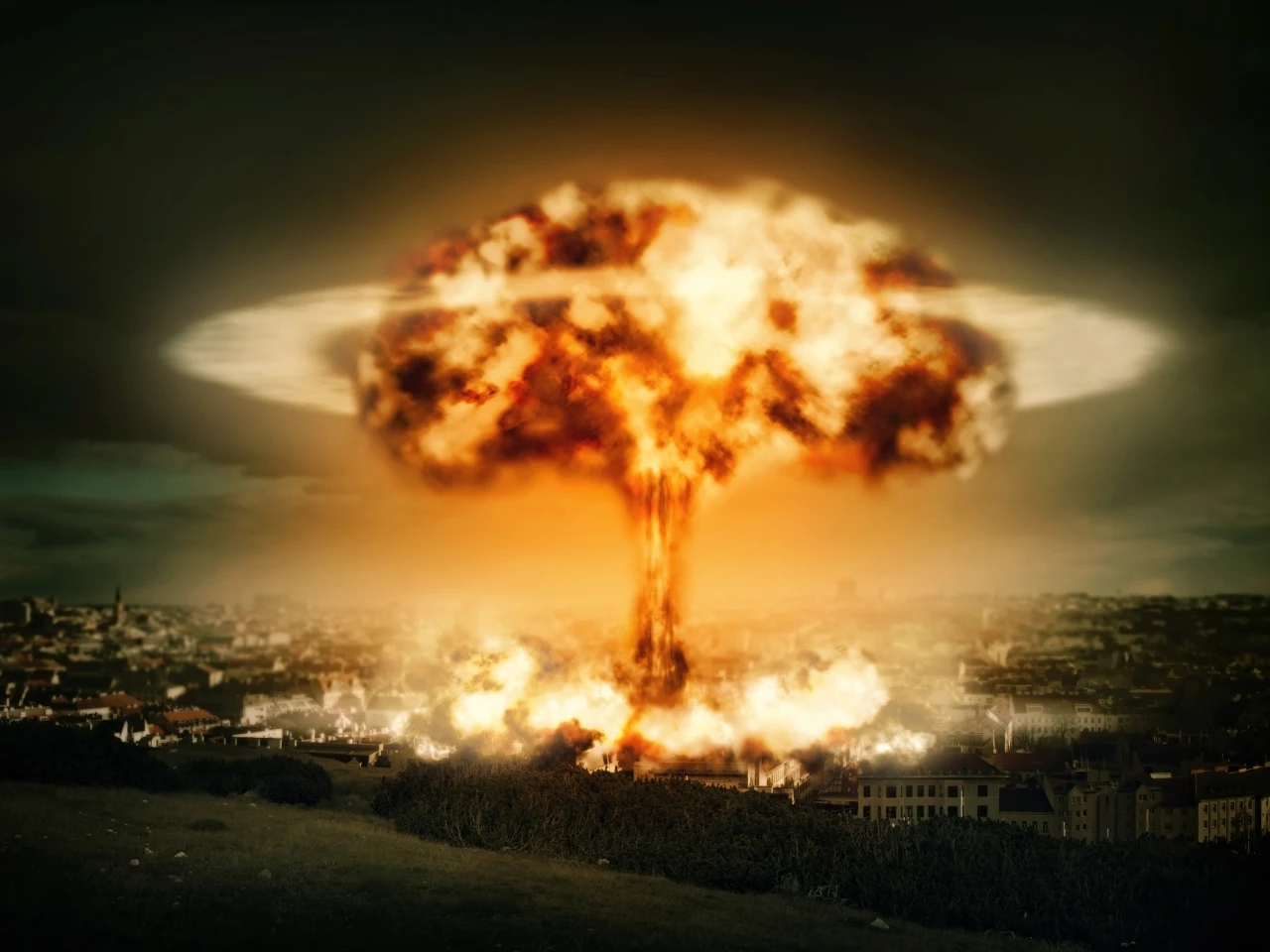Every year, the scientist world watchers at the Bulletin of the Atomic Scientists update the status of its Doomsday Clock, a metaphor for how near humanity is to meeting a catastrophic end. The closer to midnight that the minute hand moves, the bigger the threat. And the 2020 clock is the most dire warning to date.
In 1945, scientists from the University of Chicago who were involved in the development of the first atomic weapons in the Manhattan Project launched the Bulletin of the Atomic Scientists. Two years later the group created the Doomsday Clock as an indicator of the threat level to humanity and the world we inhabit.
It has since become a symbol of our "vulnerability to catastrophe from nuclear weapons, climate change, and disruptive technologies in other domains" that's recognized the world over. And every year, a decision is made on what to do with the minute hand on the countdown clock – move it closer to zero, to leave it where it is, or move it back.

The clock's minute hand started at seven minutes to midnight in 1947. Nuclear weapons development pushed it forward during the remainder of the 40s and early 50s, but the arms race showed signs of slowing in the 1960s, resulting in the minute hand going back as far as 12 minutes to midnight. And it's been a similar up and down picture ever since, with the Doomsday Clock managing to display 17 minutes to midnight in the early 1990s. Good times.
As we entered the 21st century though, the annual trend has been nudging ever closer to potential catastrophe. In 2015, as it set the minute hand to three minutes to midnight, the Science and Security Board at the Bulletin noted that "Unchecked climate change, global nuclear weapons modernizations, and outsized nuclear weapons arsenals pose extraordinary and undeniable threats to the continued existence of humanity, and world leaders have failed to act with the speed or on the scale required to protect citizens from potential catastrophe. These failures of political leadership endanger every person on Earth."
A call to the people to take action if politicians failed to act came in 2017, as the Bulletin declared that it was two and a half minutes to midnight. World leaders were again chastised for lack of action in 2018 – two minutes to midnight – and again last year, though there was no movement in the minute hand.
And now – 75 years after the first issue of the Bulletin of the Atomic Scientists – the Doomsday Clock is closer to midnight than ever before, standing at 100 seconds before the bong signals the end.
This year's statement notes that we continue to face the simultaneous threats of nuclear war and climate crisis, but also recognizes that the flames are being fanned by the increased used of "cyber-enabled information warfare."

Though climate crisis awareness grew in 2019, helped along by climate strikes by young people across the globe, appropriate action by world leaders has been sadly lacking, with the US even threatening to withdraw from the 2015 Paris Agreement. Yet the last decade has been shown to be the warmest since records began in the 1880s, wildfires have raged in the Amazon, Australia, Siberia, Indonesia and California, and glaciers are melting away at an alarming rate.
The scientific observers also draw attention to the ending – or undermining – of several arms control treaties and negotiations during 2019, "creating an environment conducive to a renewed nuclear arms race, to the proliferation of nuclear weapons, and to lowered barriers to nuclear war."
We live in an age where many of us can access the world's knowledge databank using a device in our pockets, but a sharp increase in the spread of disinformation through digital means of late is "undermining domestic and international efforts to foster peace and protect the planet."

"This situation – two major threats to human civilization, amplified by sophisticated, technology-propelled propaganda – would be serious enough if leaders around the world were focused on managing the danger and reducing the risk of catastrophe," reads the Bulletin's statement. "Instead, over the last two years, we have seen influential leaders denigrate and discard the most effective methods for addressing complex threats – international agreements with strong verification regimes – in favor of their own narrow interests and domestic political gain. By undermining cooperative, science- and law-based approaches to managing the most urgent threats to humanity, these leaders have helped to create a situation that will, if unaddressed, lead to catastrophe, sooner rather than later."
By moving the Doomsday Clock closer to midnight than ever before, the Bulletin's board members – in consultation with its Board of Sponsors, which includes 13 Nobel laureates – are essentially declaring a global state of emergency and calling on the citizens and leaders of the world to take immediate action.
"The Bulletin believes that human beings can manage the dangers posed by the technology that humans create," said the Bulletin's President and CEO, Rachel Bronson, PhD. "The moment demands attention and new, creative responses. If decision makers continue to fail to act – pretending that being inside two minutes is no more urgent than the preceding period – citizens around the world should rightfully echo the words of climate activist Greta Thunberg and ask: How dare you?”





